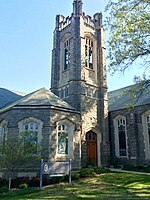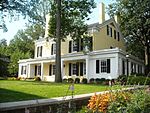East Asian Library and the Gest Collection
The East Asian Library and the Gest Collection (pronounced "Guest") in the Princeton University Library is the university's principle collection of materials in Chinese, Japanese, and Korean languages, as well as works on Chinese, Japanese and Korean linguistics and literatures in Western languages.The Gest Oriental Library is named in honor of Guion Moore Gest (1864-1948), whose collection of Chinese books and manuscripts formed the Gest Chinese Research Library. The Gest Research Library was officially opened on February 13 (Chinese New Year's Day), 1926, at McGill University in Montreal. It was renamed the Gest Oriental Library when the collection was moved to Princeton in 1937. The library's holdings were expanded into Japanese and Korean after World War II to form one of the largest collections in North America. The Chinese collection is especially strong in Ming dynasty editions and works on traditional Chinese medicine.
Excerpt from the Wikipedia article East Asian Library and the Gest Collection (License: CC BY-SA 3.0, Authors).East Asian Library and the Gest Collection
Washington Road,
Geographical coordinates (GPS) Address Nearby Places Show on map
Geographical coordinates (GPS)
| Latitude | Longitude |
|---|---|
| N 40.350335 ° | E -74.657036 ° |
Address
Firestone Library
Washington Road 1
08544
New Jersey, United States
Open on Google Maps










